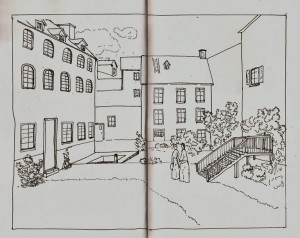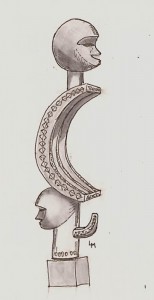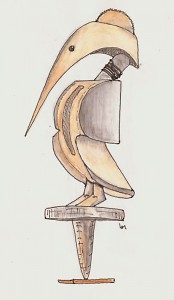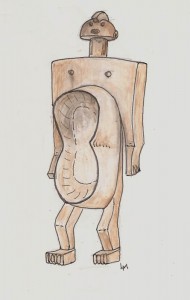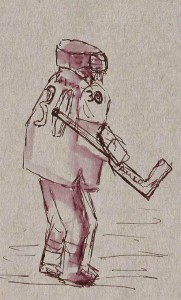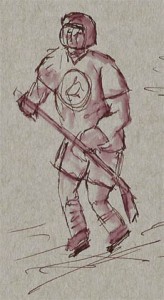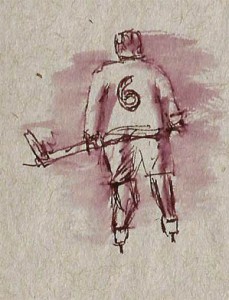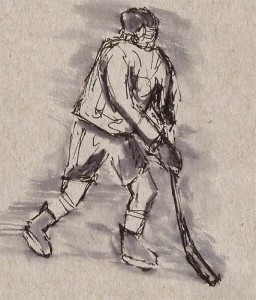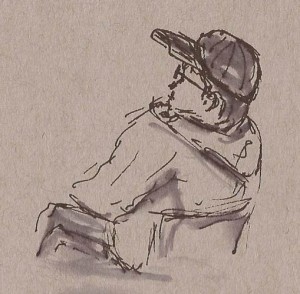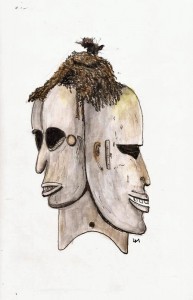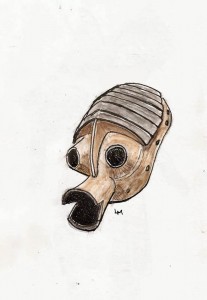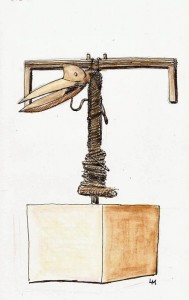I continue to sketch at the Musée de la Civilisation here in Quebec City because it’s turned cold again. Mother Nature seems to be reminding us that it’s too soon for spring. We’re supposed to have a big snow storm at the beginning of next week 🙁
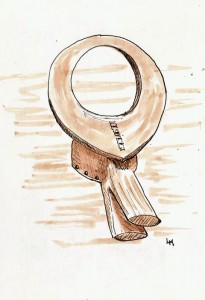 But the practice I’m getting at seeing and depicting shape couldn’t be better as the Nigerian artifacts are truly extraordinary when it comes to shape. I’m starting to experiment a bit with technique, trying to do some more quickly than others, some less/more detailed. This is fun to do, though it takes a certain amount of gymnastics on the part of my brain to break out of my penchant for detail and a slow pace. I thought I’d share a few more with you.
But the practice I’m getting at seeing and depicting shape couldn’t be better as the Nigerian artifacts are truly extraordinary when it comes to shape. I’m starting to experiment a bit with technique, trying to do some more quickly than others, some less/more detailed. This is fun to do, though it takes a certain amount of gymnastics on the part of my brain to break out of my penchant for detail and a slow pace. I thought I’d share a few more with you.
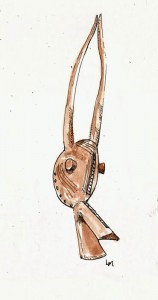 I did these first two by creating a rough outline in pencil. I followed this by the addition of color using a waterbrush with a few drops of J. Herbin Lie de thé. Then I added the ink outlines and hatching. These were also done more quickly than my normal snail pace and while not as precise, I like the results of this process.
I did these first two by creating a rough outline in pencil. I followed this by the addition of color using a waterbrush with a few drops of J. Herbin Lie de thé. Then I added the ink outlines and hatching. These were also done more quickly than my normal snail pace and while not as precise, I like the results of this process.
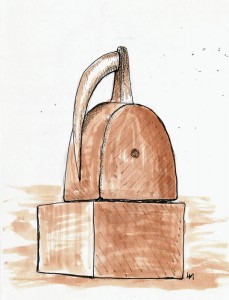 This one was done in the same quick style but I did it in ink and then added the color, again from the waterbrush/ink pen. It’s a large pestle used for smashing grain, or unruly husbands I suspect.
This one was done in the same quick style but I did it in ink and then added the color, again from the waterbrush/ink pen. It’s a large pestle used for smashing grain, or unruly husbands I suspect.
Finally, I’ve been waiting to do this helmet for a while. It’s something 0f an anomaly in this exhibit as most of the items are created in wood and covered with mud of varying textures. It seems cast in metal and is very detailed. It called out for a detailed sketch and so I went back to my more typical approach. I used a Pilot Prera and Lexington Gray ink. I added some shading using Faber-Castell watercolor pencils. The more I use these the more I love them for adding color as you can get the lines to completely disappear with a waterbrush. Very handy for shading.
All four of these sketches were done in a Stillman & Birn Epsilon (5.5×8.5) and I realized that I’ve never filled this one with just museum sketches this winter. But I’m ready for spring…aren’t you?



